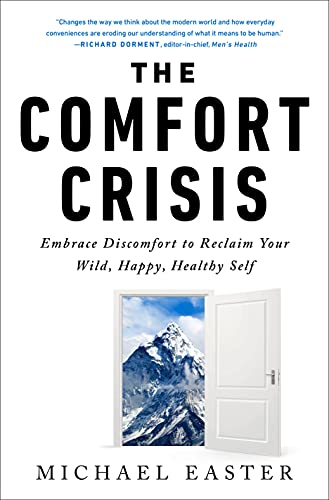I recently spent a month in the Alaskan backcountry. I came home in the best shape of my life, but I hadn’t “exercised” the entire month.
Life took effort. Getting warm required hauling firewood. Satiating my hunger and slaking my thirst meant hunting across tens of miles of rough land while wearing a heavy pack or hiking down to a stream and hoofing heavy water bags back to camp. Returning to camp each day required rucking across untamed, hilly land. Even rest wasn’t inactive—I had no chair, so I’d kneel, squat, or sit cross-legged, always fidgeting for a better position. These tasks twisted over the course of a day to burn thousands of calories.
This is how life was for millennia. But from cars to escalators, humans have built the modern world to eliminate physical activity from our lives. Compared with today’s Americans, our hunter-gatherer ancestors may have gotten about 14 times as much moderate to vigorous physical activity, a 2016 study found. These early humans were essentially professional athletes whose livelihood made physical effort imperative. They didn’t “work out,” because nearly all of their waking hours were spent doing necessary-to-not-die tasks that we might classify as exercise today. They filled their days digging, carrying, walking, and sometimes running, covering anywhere from nine to 20 miles. The 2016 study determined this type of lifestyle caused them to burn about 40 percent more calories a day than the average modern American.
Once machines and comforts began removing exertion from our days, we started seeing exercise as a 30-minute class we take at the gym—separate and distinct from our lives. But it turns out that seemingly small choices—like whether to take the stairs, where and how to sit, and whether to park in the faraway spot and carry our groceries—can, in fact, have a larger impact on our health and fitness than our workout does, according to research. One study showed that this type of incidental activity accounts for up to 800 of the calories you burn each day. That’s like a six-mile run. Even standing or fidgeting while sitting can burn as many as 350 more calories across a day compared with sitting stationary, according to research from the Mayo Clinic.
In fact, the CDC recommends at least 150 weekly minutes of moderate activity—like yard work or a brisk walk. Hitting this target may reduce our risk of chronic disease and premature death by 20 to 30 percent, according to scientists in Canada who analyzed 16 large-scale exercise studies. The more movement we sneak into our days, the more death resistant we’ll be. Still, only half of Americans hit that 150-minute recommendation. Twenty-six percent of us don’t do any type of physical activity, life as a sort of prolonged shuffle from bed to office chair to sofa to bed.

We shouldn’t be surprised or feel bad about it. Evolution wired humans to favor inactivity and feel uncomfortable under physical strain because it saved precious energy when food was scarce. To understand just how wired we are for inactivity, consider this stat: 2. That’s the percentage of people in one study who took the stairs when an escalator was nearby.
When I got home, seeing the benefits from Alaska, I dedicated myself to becoming a two-percenter—that sliver of people who push back against our lazy wiring.
It would be impossible to mimic the constant effort I faced up there, so I tried to engineer my world to be a little more effortful. I carried my groceries, parked in the farthest spot, took phone meetings while walking or cleaning the house, and more. Even those who are bone-tired after a day of performing manual labor can benefit from this—the repetitive nature of many physical jobs often creates movement and strength asymmetries that may lead to pain. Putting in a little effort doing new activities, especially when you’re exhausted from work, can offset that.
None of these acts on their own are able to move the dial, but collectively they are powerful. I’m not moving quite as much as our ancestors—14 times as much is a big number—but I’m getting there, and taking the stairs definitely helps. I’m losing stubborn fat and boosting my health and fitness.
This story was featured in the September 2021 issue of Men’s Health and adapted from the book The Comfort Crisis: Embrace Discomfort to Reclaim Your Wild, Happy, Healthy Self, by Michael Easter. Published by Rodale Books.
Source: Read Full Article